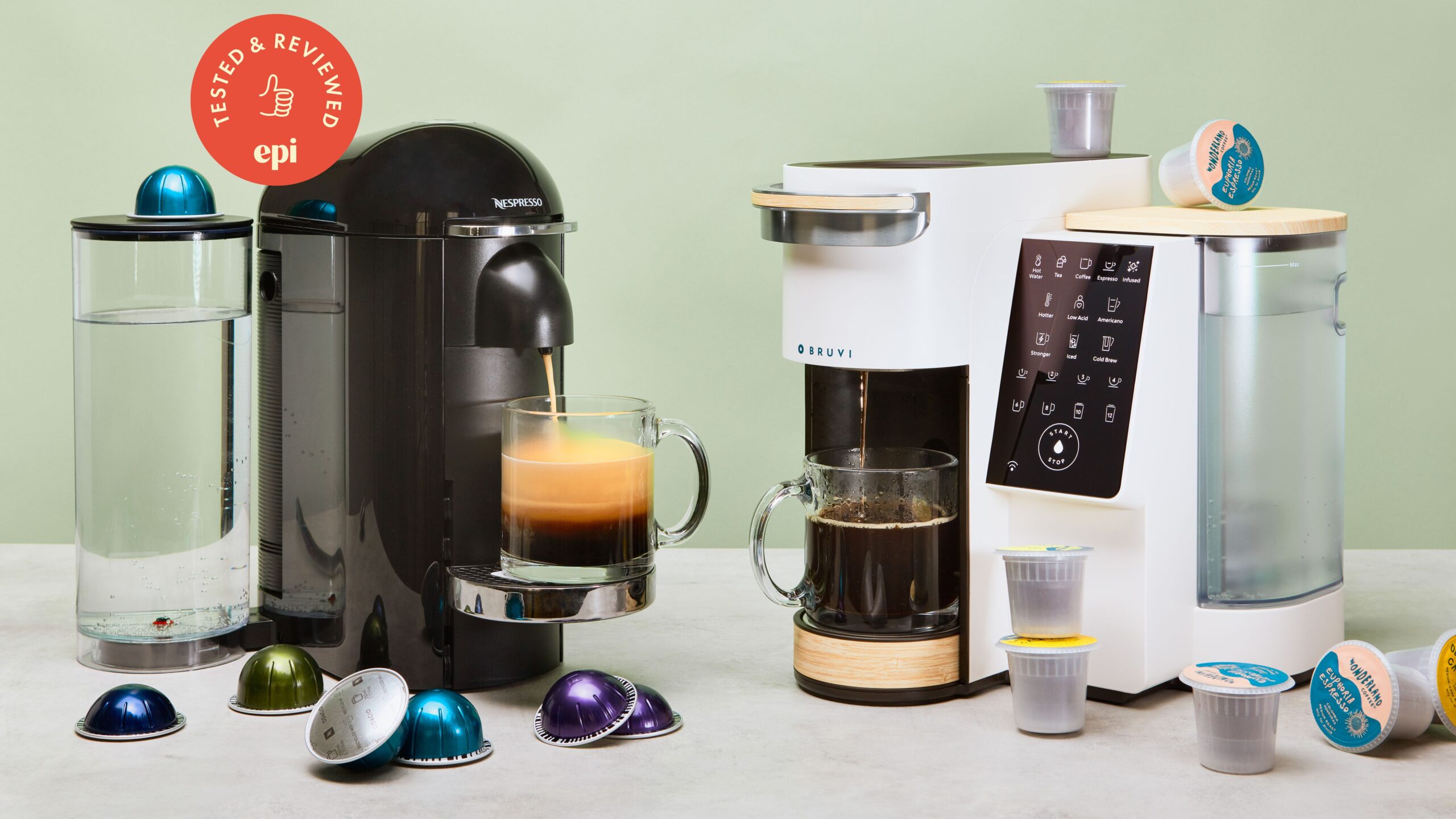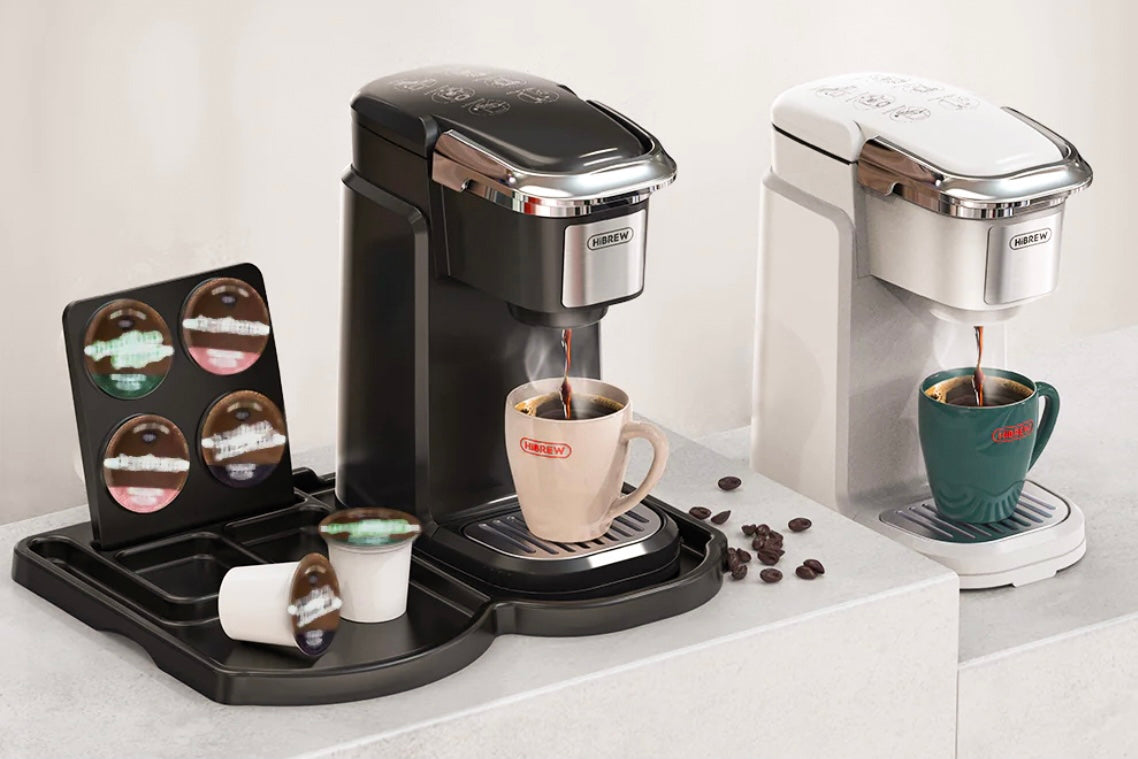If you’re a coffee lover like most of us, you’ve probably invested in a pod coffee maker to enjoy the perfect cup of joe at home. But have you ever found yourself frustrated when your favorite brand of pods doesn’t work with your machine? We’ve all been there. In this article, we’ll explore the common issues faced with pod compatibility and provide some helpful tips and solutions to ensure you never have to go without your beloved morning coffee again. So sit back, relax, and let’s get to the bottom of this pod predicament together. If so, you’re not alone. Many coffee lovers have encountered various problems when it comes to using pods in their coffee makers. In this article, we will explore the common issues related to pod compatibility and discuss the causes, impacts on coffee quality, how to identify compatibility issues, tips to ensure pod compatibility, solutions for compatibility problems, pod compatibility comparisons, and future developments in pod compatibility. By the end of this comprehensive guide, you’ll have a better understanding of the challenges associated with pod compatibility and how to overcome them.
Common Issues with Pod Compatibility
Pods not fitting properly
One of the most common problems with pod compatibility is pods not fitting properly into the coffee maker. This can occur when the size or shape of the pod is not compatible with the machine. It can be frustrating to try and insert a pod into your machine, only to find that it doesn’t fit snugly or falls out during the brewing process. This issue can lead to a messy and inefficient brewing experience.
Pods getting stuck in the machine
Another issue that coffee lovers may encounter is pods getting stuck in the machine. This can happen when the pod is not properly aligned or the machine’s mechanism is not designed to handle certain pod sizes or materials. When a pod gets stuck, it can be difficult to remove, causing frustration and potentially damaging the machine.
Pods leaking during brewing
Leaking pods during the brewing process is yet another common problem faced by pod coffee maker users. The seal between the pod and the machine may not be airtight, leading to water or coffee leaking out during the brewing cycle. This can result in a messy cleanup and a less flavorful cup of coffee.
Pods not being recognized by the machine
Some coffee makers are designed to only work with specific pod brands or types. If you try to use a pod that is not recognized by the machine, you may receive an error message or the machine may fail to brew altogether. This issue can limit your options and prevent you from enjoying your preferred coffee brands.
Causes of Pod Compatibility Issues
Different pod sizes
The primary reason for pod compatibility issues is the difference in pod sizes. Coffee makers are designed to accommodate specific pod sizes, and if the pods you are using are larger or smaller than what the machine is intended for, you are likely to encounter compatibility problems. It’s important to check the size specifications of the pods and compare them to the dimensions provided by the coffee maker manufacturer.
Incorrect pod placement
Improper pod placement can also contribute to compatibility issues. Some coffee makers have specific instructions on how to position the pods correctly, and failure to follow these guidelines can result in poor compatibility. It’s essential to carefully read the user manual and ensure that you are placing the pods correctly in the designated spot.
Faulty pod design
Sometimes, the issue lies with the design of the pod itself. Poorly designed pods may not align properly with the machine’s brewing mechanism or may not have a secure seal, leading to compatibility problems. If you consistently encounter compatibility issues with a particular brand or type of pod, it may be worth exploring other options that have better-designed pods.
Machine software or hardware error
Compatibility issues can also be caused by errors or malfunctions in the coffee maker’s software or hardware. Outdated software or faulty hardware can prevent the machine from recognizing or properly brewing certain pods. In such cases, updating the machine’s software, if available, or contacting the manufacturer for support may help resolve the compatibility issues.
Impact on Coffee Quality
Inconsistent taste and flavor
When facing pod compatibility issues, one of the significant impacts on coffee quality is the inconsistency in taste and flavor. If your machine is not compatible with the pods you are using, it can result in coffee that tastes different from what you expect or inconsistent flavor profiles. This can be particularly frustrating for coffee connoisseurs who enjoy a specific taste or blend.
Weak or under-extracted coffee
Compatibility problems can also lead to weak or under-extracted coffee. If the machine is unable to properly brew the coffee from the pod, you may end up with a watery or underwhelming cup of coffee. This can be disappointing, especially if you rely on your coffee maker for a morning pick-me-up or enjoy a robust cup of coffee.
Difficulty in controlling brew strength
Another impact of pod compatibility issues is the difficulty in controlling brew strength. Some coffee drinkers prefer a strong, bold cup of coffee, while others prefer a milder brew. When compatibility issues arise, it can be challenging to achieve the desired brew strength, as the machine may not extract the coffee grounds properly. This lack of control over the strength of your coffee can be frustrating for those who have specific preferences.
Inability to use preferred coffee brands
Perhaps one of the most significant impacts of pod compatibility issues is the inability to use your preferred coffee brands. If your machine only accepts specific pods and is not compatible with the brands you love, you are limited in your options. This can be disheartening, as coffee lovers often have a preference for certain brands or blends that may not be compatible with their coffee maker.
How to Identify Pod Compatibility Issues
Difficulty in inserting pods
One way to identify pod compatibility issues is by noticing difficulties when inserting pods into the machine. If the pod does not fit properly into the designated area, or if you experience resistance or force required to close the machine, it could indicate a compatibility problem. Pay attention to how smoothly the pods fit into the machine and whether they stay in place during the brewing process.
Unusual resistance or force required to close the machine
In addition to difficulties in inserting pods, an unusual amount of resistance or force required to close the machine can also be a sign of compatibility issues. If the machine feels stiff or if you need to apply excessive pressure to close it, it may be an indication that the pod is not aligning correctly or that it is not compatible with the machine. Be mindful of any unusual resistance you encounter when using your coffee maker.
Visible leaks during brewing process
Visible leaks during the brewing process are another telltale sign of pod compatibility issues. If you notice water or coffee escaping from areas other than the designated spout or if you find puddles around the machine after brewing, it could indicate that the pods you are using are not sealing properly with the machine. Keep an eye out for any leaks or spills during the brewing process.
Error messages or failure to brew
Perhaps the most obvious indicator of pod compatibility issues is the presence of error messages or the machine’s failure to brew altogether. If you receive error messages indicating that the pod is not recognized or if the machine refuses to start the brewing process, it is a clear indication that the pods are not compatible with the machine. Pay attention to any error messages displayed on the machine’s interface and seek solutions accordingly.
Tips to Ensure Pod Compatibility
Check pod size and shape specifications
To help ensure pod compatibility, it is essential to check the size and shape specifications of the pods you intend to use. Different coffee makers have varying size requirements, and failure to use pods that fit within those dimensions can result in compatibility issues. Take note of the recommended dimensions provided by the coffee maker manufacturer and compare them to the pods you have or plan to purchase.
Verify correct pod placement
Proper pod placement is crucial for compatibility and successful brewing. Take the time to read the user manual or instructions provided by the coffee maker manufacturer to ensure that you are placing the pods correctly. Incorrect pod placement can lead to compatibility issues, so pay attention to the recommended position and alignment.
Clean and maintain the machine regularly
Regular cleaning and maintenance of your coffee maker can contribute to better pod compatibility. Over time, residue, coffee oils, and mineral buildup can affect the machine’s functionality and potentially lead to compatibility issues. Follow the manufacturer’s instructions for cleaning and descaling your machine to keep it in optimal condition. By maintaining a clean coffee maker, you can help prevent issues that may arise from clogged or malfunctioning parts.
Update machine software if available
If your coffee maker has software that can be updated, it’s a good practice to check for any available updates. Manufacturers often release software updates to address compatibility issues or enhance functionality. Keep an eye out for updates from the manufacturer, and if available, follow the instructions to update your coffee maker’s software. This can help ensure better compatibility with pods and potentially resolve any issues you may be facing.
Solutions for Pod Compatibility Issues
Contacting the coffee maker manufacturer
If you are experiencing persistent pod compatibility issues with your coffee maker, it may be worthwhile to contact the manufacturer for support. Manufacturers are knowledgeable about their specific machines and can provide guidance or solutions to address compatibility problems. Reach out to the manufacturer’s customer support or consult their website for troubleshooting steps or contact information.
Using compatible pod adapters or accessories
In some cases, using specialized adapters or accessories can help improve pod compatibility. These accessories are designed to bridge the gap between the coffee maker and the pods, allowing for better alignment and secure placement. Explore the market for compatible pod adapters or accessories that are compatible with your coffee maker and brands of pods. Be sure to check the compatibility of these accessories with your specific machine.
Exploring alternative coffee brands or pod types
If your preferred coffee brands or pod types are not compatible with your coffee maker, it may be worth exploring alternative options. Many coffee manufacturers offer alternative pod formats that are designed to be compatible with a wider range of machines. Look for coffee brands that are known for their compatibility or consult user reviews and experiences to find pods that have a higher chance of being compatible with your machine.
Switching to a different coffee brewing method
If all else fails, you may consider switching to a different coffee brewing method altogether. While pod coffee makers offer convenience and ease of use, they may not be suitable for everyone, especially if you consistently encounter pod compatibility issues. Explore other brewing methods, such as drip coffee makers, French presses, or espresso machines, that allow you to use your preferred coffee brands without worrying about compatibility.
Pod Compatibility Comparisons
Comparison of major pod coffee maker brands and their compatibility
When it comes to pod coffee makers, different brands have their own proprietary pod systems. Some brands only work with their specific pods, while others offer compatibility with a broader range of brands. By comparing major pod coffee maker brands, you can better understand the compatibility limitations or advantages of each. Look for information on brand websites, read user reviews, or consult coffee maker comparison guides to assess the compatibility of different machines.
Comparison of popular coffee pod types and their compatibility
In addition to coffee maker brands, it’s important to consider the compatibility of different pod types. Popular coffee pod types include K-Cups, Nespresso capsules, and T-discs. Each pod type has its compatibility requirements, and not all machines accept every pod type. By comparing the compatibility of popular pod types, you can determine which type is most likely to work with your coffee maker or explore alternative options that offer better compatibility.
User reviews and experiences with different pod compatibility
Another valuable resource for assessing pod compatibility is the user reviews and experiences shared by fellow coffee enthusiasts. Online forums, coffee maker review websites, or social media platforms often contain discussions or testimonials regarding pod compatibility. Pay attention to feedback from users who have a similar coffee maker model or preferences, as their experiences can provide insight into the compatibility of different pods with specific machines.
Future Developments in Pod Compatibility
Improvements in pod design and standardization
As coffee makers continue to evolve, one can expect improvements in pod design and standardization. Manufacturers may work towards creating pods that are universally compatible with a wider range of coffee makers. Standardizing pod sizes, shapes, and materials can help address the compatibility issues faced by consumers and provide a more seamless and convenient brewing experience.
Advancements in machine software for better compatibility detection
Advancements in machine software can play a significant role in improving pod compatibility detection. Coffee makers may incorporate more sophisticated algorithms or sensors that can identify and adapt to different pod types. This can help reduce the chances of compatibility issues and allow coffee makers to adjust their brewing parameters based on the specific pod being used.
Introduction of universal pod formats
Another potential development in pod compatibility is the introduction of universal pod formats. Universal pods would be designed to work with any coffee maker, eliminating the need for brand-specific pods and expanding compatibility options for consumers. This would provide greater flexibility in choosing coffee brands and blends without worrying about compatibility restrictions.
Collaboration between coffee maker manufacturers and coffee brands
Collaboration between coffee maker manufacturers and coffee brands can also drive advancements in pod compatibility. By working together, manufacturers and brands can ensure that their products are designed with compatibility in mind. This collaboration can lead to the development of pods that align perfectly with a wide range of coffee makers, resulting in a more streamlined brewing experience for coffee enthusiasts.
Conclusion
Pod compatibility issues can be frustrating for coffee lovers who rely on their machines for their daily caffeine fix. It is important to understand the common issues associated with pod compatibility, the causes of these issues, and their impact on coffee quality. By identifying compatibility issues, following tips to ensure compatibility, and exploring potential solutions, you can overcome these challenges and continue to enjoy a delicious cup of coffee. Whether it’s checking pod specifications, properly placing pods, or cleaning and maintaining your machine, taking the necessary steps to address compatibility issues will enhance your overall brewing experience. Furthermore, staying informed about pod compatibility comparisons and future developments can help you navigate the ever-changing landscape of coffee pod technology.




